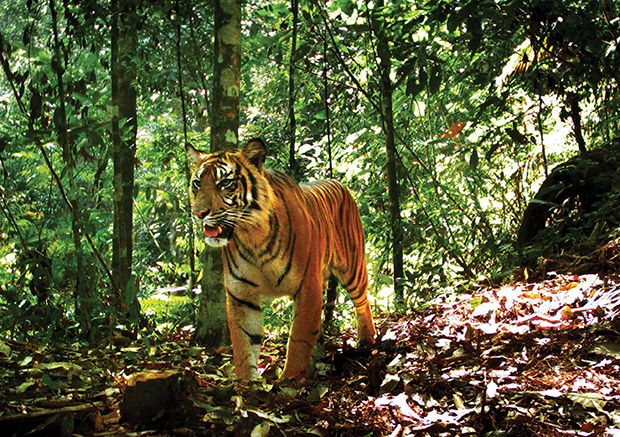
[+PHOTO]
The Big Picture
A tiger in Gunung Leuser National Park, a UNESCO World Heritage Site in North Sumatra, Indonesia. Matthew Luskin, a PhD candidate in the Department of Environmental Science, Policy, and Management living in Indonesia last year as a National Geographic Society “Explorer” and Fulbright scholar, used 80 motion-activated cameras throughout Sumatra’s three remaining large jungles to understand how tigers are coping with their rapidly shrinking habitat. Luskin and his team are finding that altered prey availability and human poachers strongly affect where the remaining 450 critically endangered tigers now persist—information that can be used to develop effective conservation plans.
